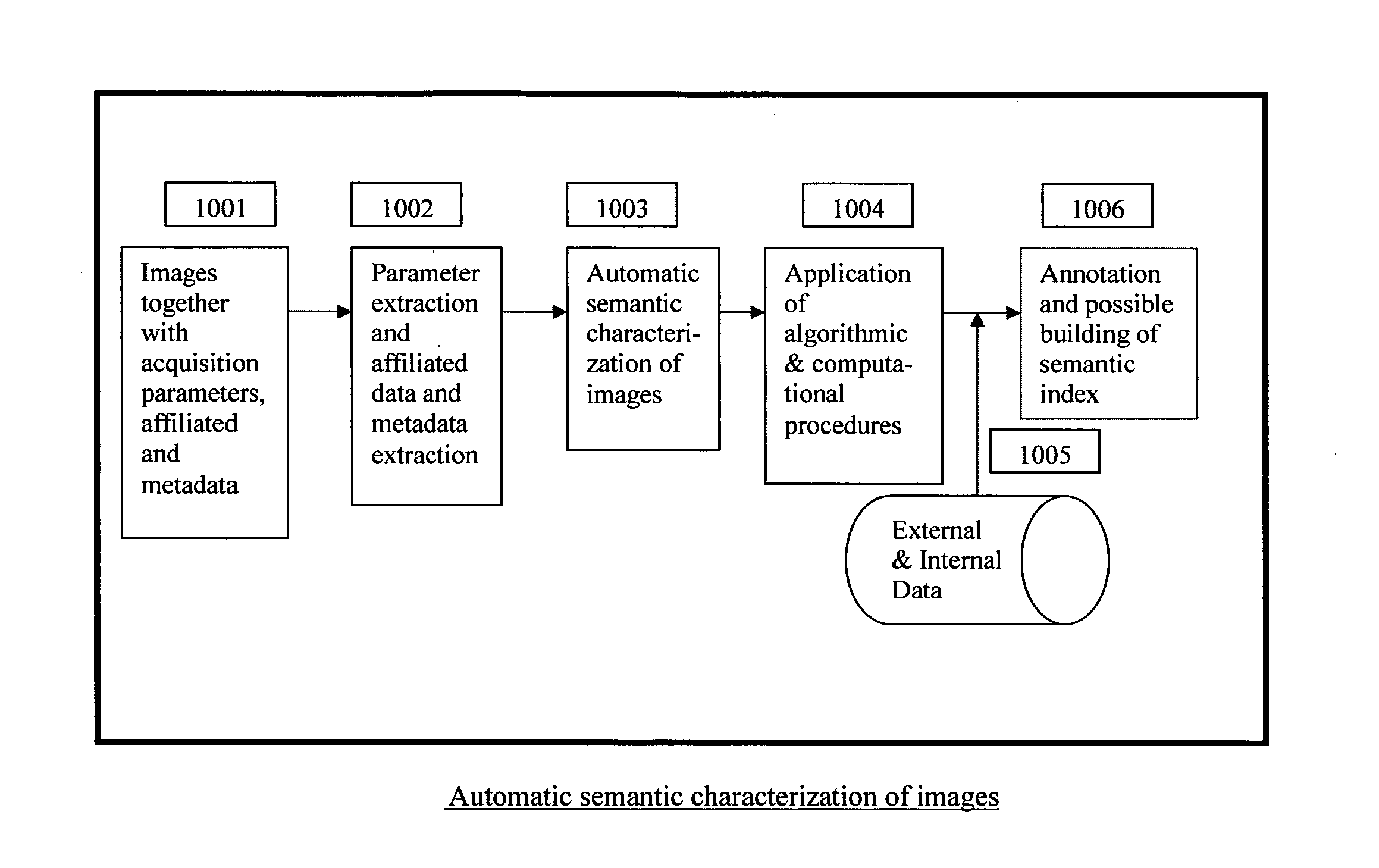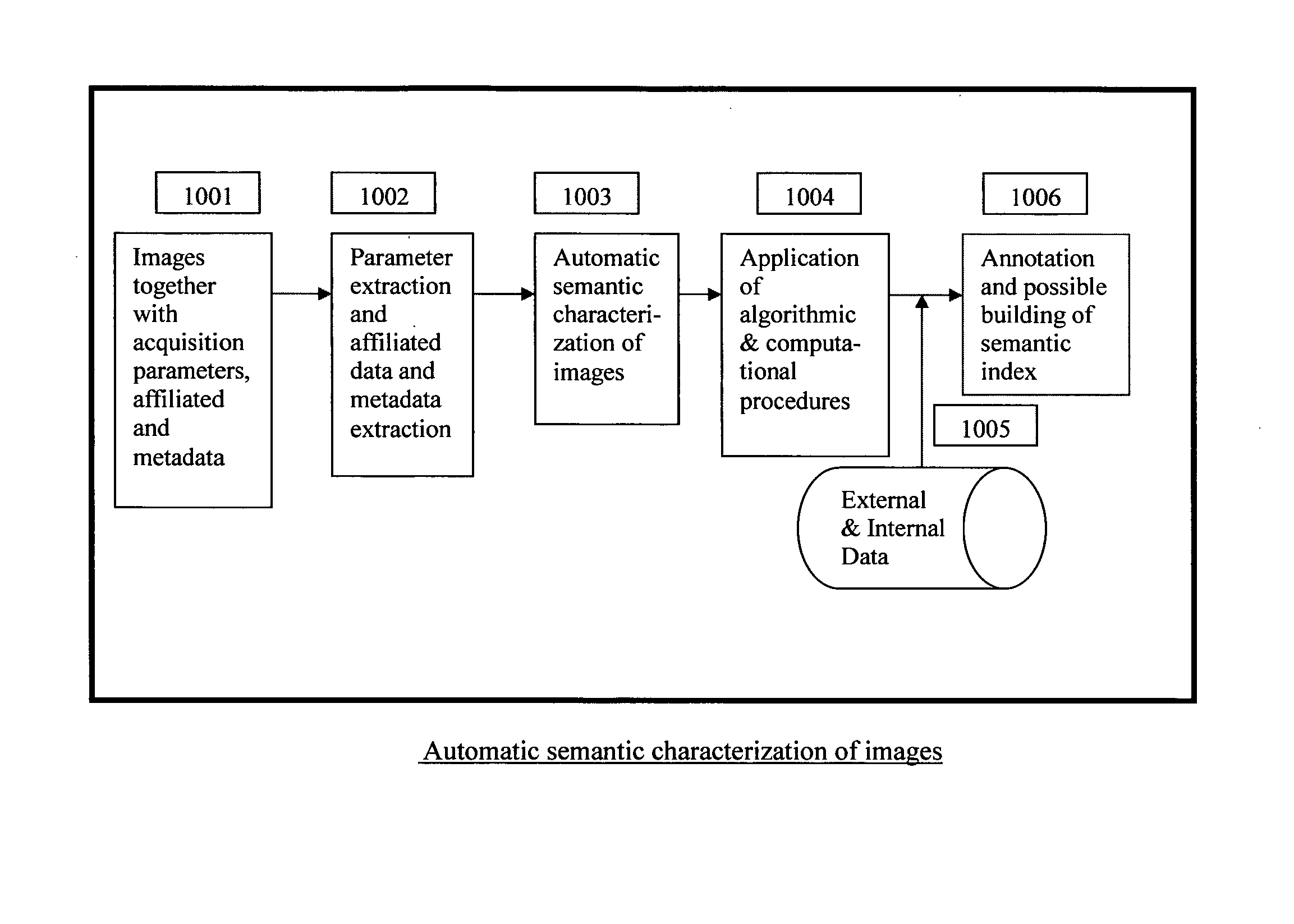Automatic and semi-automatic image classification, annotation and tagging through the use of image acquisition parameters and metadata
an image acquisition and metadata technology, applied in the field of automatic and semi-automatic image classification, annotation and tagging through the use of image acquisition parameters and metadata, can solve the problems of limiting search and discovery, and increasing the number of electronic images being created at a rapid rate. high precision
- Summary
- Abstract
- Description
- Claims
- Application Information
AI Technical Summary
Benefits of technology
Problems solved by technology
Method used
Image
Examples
Embodiment Construction
[0012]The present invention relates generally to the characterization of image contents and semantic attributes, which may take the form of any retrieval criteria employed by humans, to search and find images. Accordingly, the drawings and descriptions are to be regarded as illustrative in nature, and not as restrictive. The present invention is particularly useful for indexing images automatically. This invention will obviate the need to perform time-consuming manual indexing which has shown to be costly and, if done by a small unrepresentative group, can also produce a biased and subjective indexing structure.
[0013]The present invention makes use of metadata, which is descriptive information embedded inside an image. Certain descriptive information is typically automatically generated at image creation. For example, EXIF information (Exchangeable Image File Format), usually includes information such as date and time an image was recorded, resolution, camera settings such as shutte...
PUM
 Login to View More
Login to View More Abstract
Description
Claims
Application Information
 Login to View More
Login to View More - R&D
- Intellectual Property
- Life Sciences
- Materials
- Tech Scout
- Unparalleled Data Quality
- Higher Quality Content
- 60% Fewer Hallucinations
Browse by: Latest US Patents, China's latest patents, Technical Efficacy Thesaurus, Application Domain, Technology Topic, Popular Technical Reports.
© 2025 PatSnap. All rights reserved.Legal|Privacy policy|Modern Slavery Act Transparency Statement|Sitemap|About US| Contact US: help@patsnap.com


